Inspired by the work of Charles Darwin, Finnish symphonic metal group Nightwish's latest album, Endless Forms Most Beautiful is 'an equal tribute to science and the power of reason', exploring the theory of evolution and mankind's place in the universe. It includes a spoken word part performed by Richard Dawkins.
Endless Forms Most Beautiful is Nightwish's seventh album as a band, but is their first album with new members Floor Jansen and Troy Donockley. In addition to introducing the new line up, the band has displayed a drastic change in the thematic content of their music. While previous albums have focused heavily on fantasy themes and escapism, their new album is based around the theory of evolution and is influenced heavily by the ideas of scientific and rational thinkers. Among those who have provided inspiration for the album are Richard Dawkins, T H Huxley, Carl Sagan, Christopher Hitchens, Walt Whitman and Henry David Thoreau. Frontman, songwriter and keyboardist, Tuomas Holopainen, has compared Endless Forms Most Beautiful to album number six, Imaginaerum:
The previous album was a tribute to the power of imagination. Endless Forms Most Beautiful would be an equal tribute to science and the power of reason.
I would argue that Nightwish's back catalogue occasionally alludes to scientific concepts and themes, which really come to the foreground in this latest album. Though in this blog article I'd like to focus on Endless Forms Most Beautiful, those familiar with Nightwish's earlier work may recognise some themes and repeating motifs.
Holopainen has referred to evolution as a spiritual and poetic experience, with humbling effects. He has cited Darwin's On The Origin Of Species, which lay the foundations of the theory of evolution, as a powerful source of inspiration for the album. Considering the elegance and poetic quality of Darwin's prose, including the following quotation from which Holopainen took the name of the album, its easy to see how his writings could inspire art such as this:
There is grandeur in this view of life, with its several powers, having been originally breathed ... into a few forms or into one; and that, whilst this planet has gone cycling on according to the fixed law of gravity, from so simple a beginning endless forms most beautiful and most wonderful have been, and are being, evolved.
Charles Darwin, On The Origin Of Species
Further research into the subject area led Holopainen to become fascinated with what he calls the 'thought plays' of Richard Dawkins and Christopher Hitchens. He sent a handwritten letter to Dawkins, asking him to narrate sections of the album. Dawkins agreed, and his contributions include the spoken word passages, including pieces of his own writings and Darwin's.
Most tracks on the album seem to contribute towards the overall theme, with the exception of 'Yours Is An Empty Hope.'
Shudder Before The Beautiful
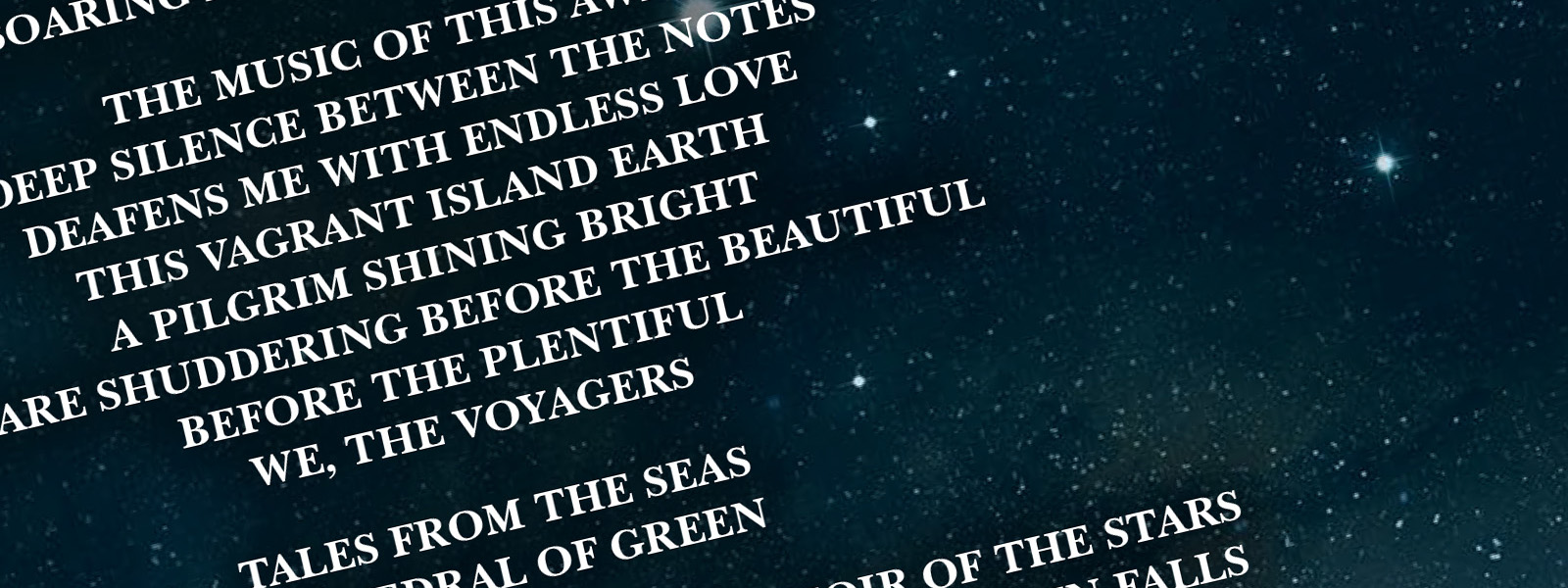
Credit: Nightwish / Nuclear Blast Records
The opening track sets the tone appropriately for the rest of the album, conveying the idea that artistic inspiration, 'music of this awe', and spiritual awakening, 'epiphany', can come from understanding the world around us, the cosmos, and such theories as evolution. Such knowledge can help us understand our place in the world and can be the source of great art. The track seems to be strongly influenced by Carl Sagan, who commented that 'understanding is a kind of ecstasy'. The opening line of the album, 'The deepest solace lies in understanding' could easily be mistaken for a quote of Sagan's. Holopainen describes this experience as humbling, understandly so, as it explains that we're but one part of the complex and ongoing process of evolution.
'Awake, Oceanborn' appears to allude to our evolution from sea dwelling creatures. It's interesting to note that Nightwish's second album was titled Oceanborn and this is a repeated motif across their albums, including the song of the same name. Though at its release, Oceanborn appeared to be mainly influenced by fantasy and theatrical themes, in the context of Endless Forms Most Beautiful, it's possible to see these lyrics in a new light. It seems appropriate that the track 'Stargazers' from the Oceanborn album has had a revival in live shows since Floor's joining the band, as the lyrics are thematically similar to those on Endless Forms Most Beautiful:
A grand oasis in the vastness of gloom
(...)
Floating upon the quiet hydrogen lakes.
'Quiet hydrogen lakes' suggests an alternative biochemistry on this fantasy world, not unlike the hypothetical biochemistries offered by Issac Asimov. Hydrogen is the most common substance with a liquid range at temperatures below that of liquid methane is hydrogen, so hydrogen may be a possible common liquid on cold planets. Carl Sagan also speculated that alien life might be based on ammonia, hydrocarbons or hydrogen fluoride instead of water.
The track 'Stargazers' also refers to the 'theatre for the play of life,' and 'wanderers in cosmic caravan,' as if referring to travelling gypsy performers. This metaphor for life and the ongoing process of evolution as a theatre show or performance is a running theme throughout Endless Forms Most Beautiful. Here it's described as 'interstellar theatre play', upon which 'the nebulae curtain falls.' Reflecting the message of the track, the scientific lexicon provides beautiful new language that enhances metaphor and lends unique musicality to the poetry. Rarely seen outside of science text books, taxonomic names of organisms, the names of periods in Earth's history and astronomical terms bring a wealth of intertextuality and provide opportunities for a variety of new metaphors. This exemplifies how 'understanding' of scientific principles can bring awe, awakening, and artistic appreciation.
Weak Fantasy

Credit: Nightwish / Nuclear Blast Records
Holopainen has long cited the writings of Walt Whitman as an influence, and even teasingly refers to the American poet as 'Uncle Walt' (A reference to 1989 film, Dead Poet's Society). Whitman's ideas of transcendentalism are evident in 'Weak Fantasy', which focuses on the corrupting power of religion and politics. It's clear that Dawkins has influenced the album not just with his scientific writing, but with his anti-religious polemics, as this track takes on an aggressive anti-religious tone that could be compared with Dawkins' 'The God Delusion.' I can imagine Dawkins also referring to the idea of a supernatural creator as a 'weak fantasy,' or 'witchcraft filling [the] void.'
This fits with the narrative in the whole album in the sense that it charts the rise of man, his ambitions and the formation of religion, politics and hierarchy. It resonates with the final album track, 'The Greatest Show On Earth', which charts both the rise and inevitable demise of humankind, showing how miniscule our ambitions are against the endless march of evolution.
Élan
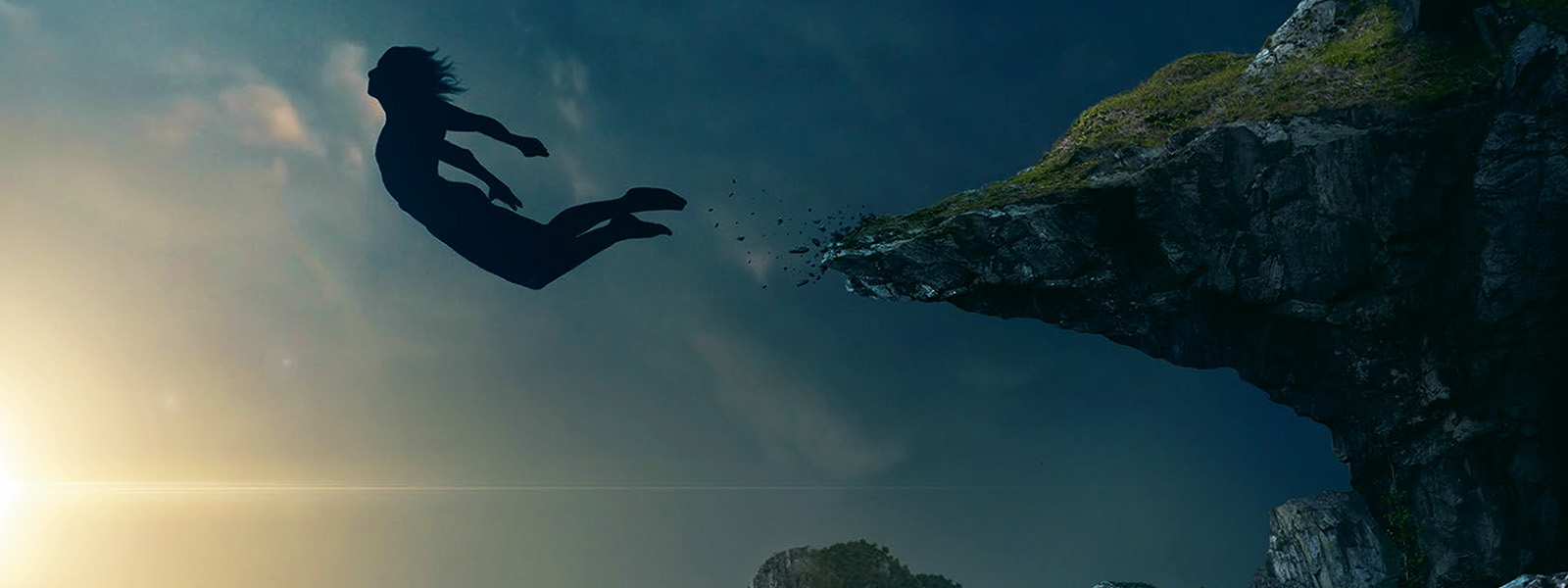
Credit: Nightwish / Nuclear Blast Records
The answer to the riddle before your eyes,
Is in dead leaves and fleeting skies
The more uplifting in what seems to be a duo of tracks inspired by Walt Whitman, Élan encourages us to 'take the path less travelled.' In the final track of the album, 'The Greatest Show On Earth', Dawkins reminds us of the overwhelming odds we've overcome just to be here: the odds of a planet like Earth being able to bear life, and the odds of our particular set of genes coming together to make us who we are. This spirit is imbued in the track, Élan, which is appropriate for a song named after the French word for 'liveliness' or 'exuberance'.The track encourages us appreicate life and to explore our uniqueness, with such activities as laughing 'at the orthodox' and writing 'lyrics for a song only you can understand.' Once again, understanding of science is central to improving our sense of well-being, as we can better appreciate life when we understand our place in it.
My Walden
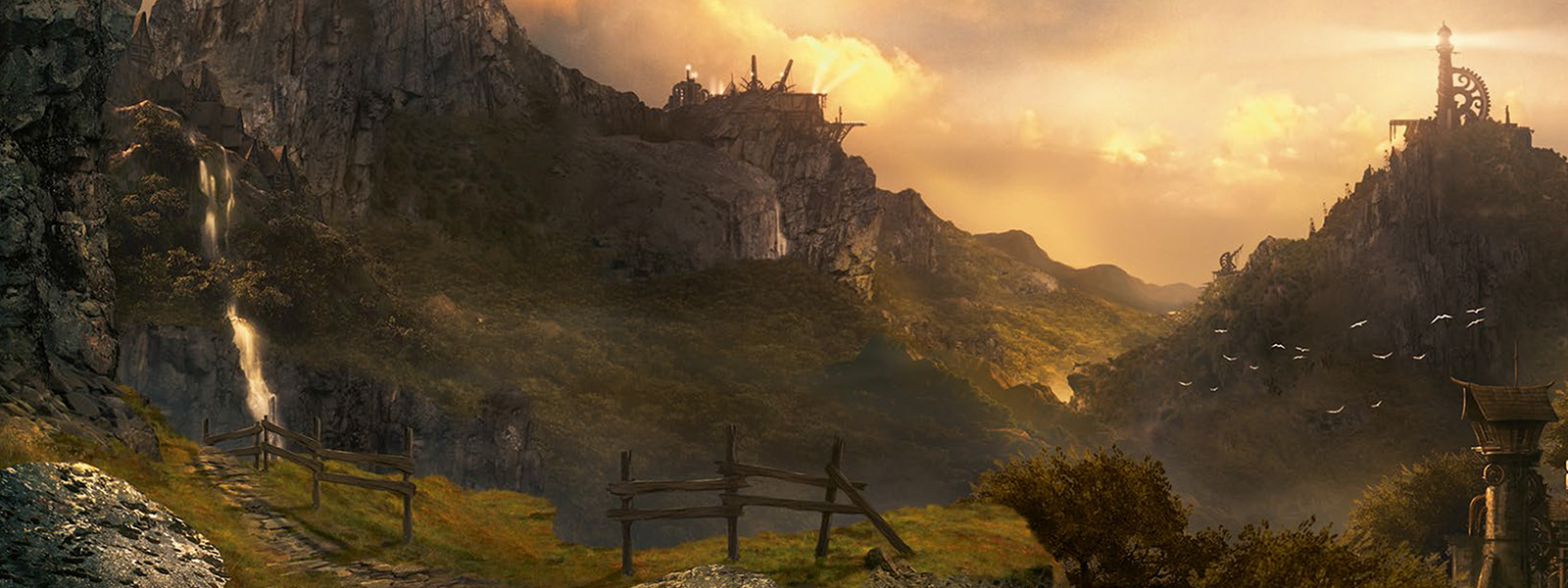
Credit: Nightwish / Nuclear Blast Records
Despite a unfortunate spelling mistake, or typo, I was very surprised and excited to see a Welsh language spoken introduction to this track. Nightwish have a history of appropriating musical styles and languages of other cultures when it fits thematically with the track. As the track seems influenced by the writings of Henry David Thoreau, I can only assume that Wales represents the ideal 'Walden' in the eyes of the band. (How can I disagree?)
Thoreau's 'Walden' or 'Life In The Woods' is partly a social experiment, partly a reflection on simple living in natural surroundings. It had a strongly transcendentalist slant, aligned with the writings of Walt Whitman. The track seems to depict a utopian society in stark opposition to the one we see in 'Weak Fantasy'.
I went to the woods because I wished to live deliberately, to front only the essential facts of life, and see if I could not learn what it had to teach, and not, when I came to die, discover that I had not lived. I did not wish to live what was not life, living is so dear; nor did I wish to practice resignation, unless it was quite necessary.
I wanted to live deep and suck out all the marrow of life, to live so sturdily and Spartan-like as to put to rout all that was not life, to cut a broad swath and shave close, to drive life into a corner, and reduce it to its lowest terms, and, if it proved to be mean, why then to get the whole and genuine meanness of it, and publish its meanness to the world; or if it were sublime, to know it by experience, and be able to give a true account of it in my next excursion.
Henry David Thoreau, Walden
Perhaps this song is partly autoboiographical, as a later track 'Edema Ruh' also seems to allude to the band members' personal experiences creating music and touring. Nightwish retreated to a remote lakeside college in the Karelia region of Finland to record the album. This experience of living simply and focusing on the task of creating this album could be compared with Thoreau's experience of living simply out in the woods. The album's themes also encourage us to 'suck out all the marrow of life', as Thoreau aimed to do. The album's lyrics suggest that learning about evolution, 'to front the essential facts of life,' is a spiritual and artistic experience. There are undoubtedly parallels to be drawn and this track perhaps indicates the band identified with Thoreau's experience while creating the album.
Endless Forms Most Beautiful

Credit: Nightwish / Nuclear Blast Records
This track seems to most obviously deal with the process of evolution, and takes the listener back along the evolutionary path. This 'ride' echoes the themepark references in the Imaginaerum album, which like many of the songs on the album, makes theatre out of the scientific process. Evidence of evolution left in the fossil record presents 'a tale from the past to tell.'
'Our floating pale blue ark' seems to be a direct reference to the 'Pale Blue Dot' photograph taken of Earth in 1990 by the Voyager 1 space probe, at a distance of 6 billion kilometres. Earth appears as a single blue pixel, a tiny dot in the vastness of space around it. Despite the apparent insignificance of Earth against the vastness of space, it is capable of not just supporting life, but supporting the grand and complex proccess of evolution that has produced 'endless forms most beautiful.' Reference to the 'Tiktaalik', which is an archetypal example of the evolutionary transition from fish to animals, reminds us that we are the product of this long process, and that humankind is not a species that stands alone, but one stage in a process that began eons ago and will continue long into the future.
Edema Ruh
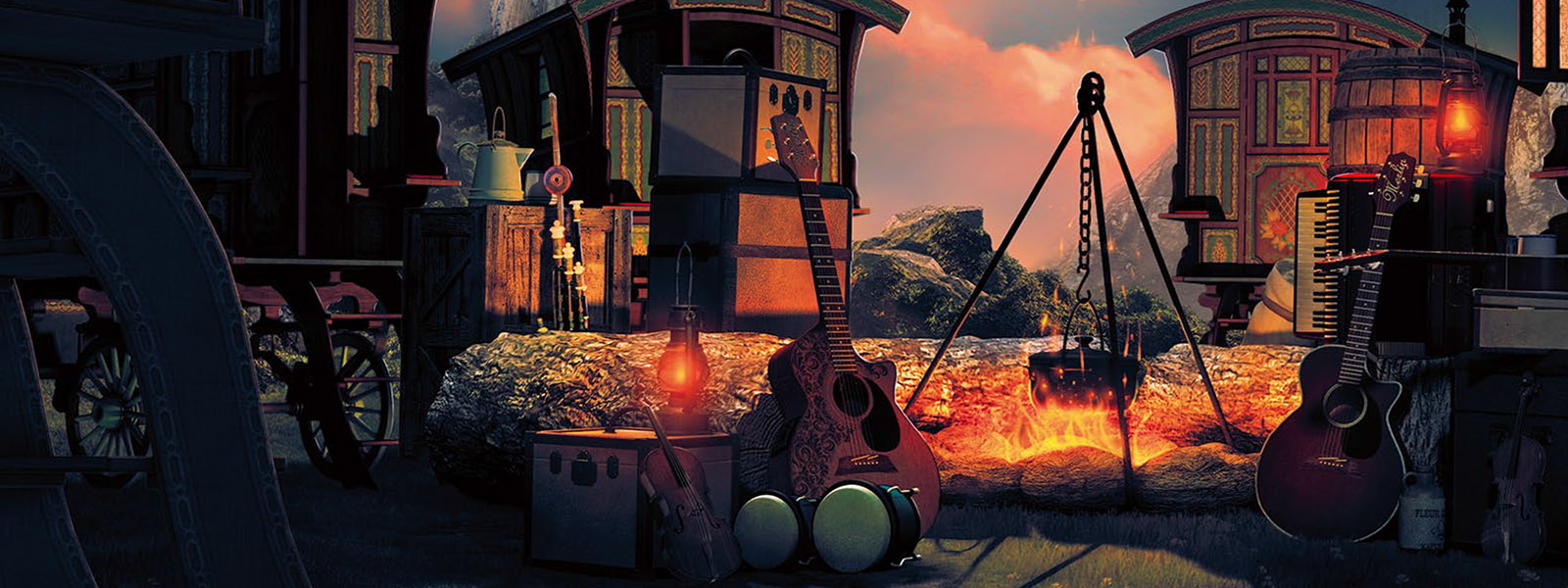
Credit: Nightwish / Nuclear Blast Records
Before Élan was fully developed, this track was the band's stand out first single. It does serve as an appropriate introuduction to the theme of the album, as it continues an idea that begins in 'Walden', of the band as a group of travelling musicians who tell the tale of evolution. The Edema Ruh are a travelling group of entertainers from a series of fantasy novels, The Kingkiller Chronicle by Patrick Rothfuss. Theatrical metaphor also plays its part in this track, with references to 'the planetary curtain' and 'the theatre of the primal birth.'
Alpenglow
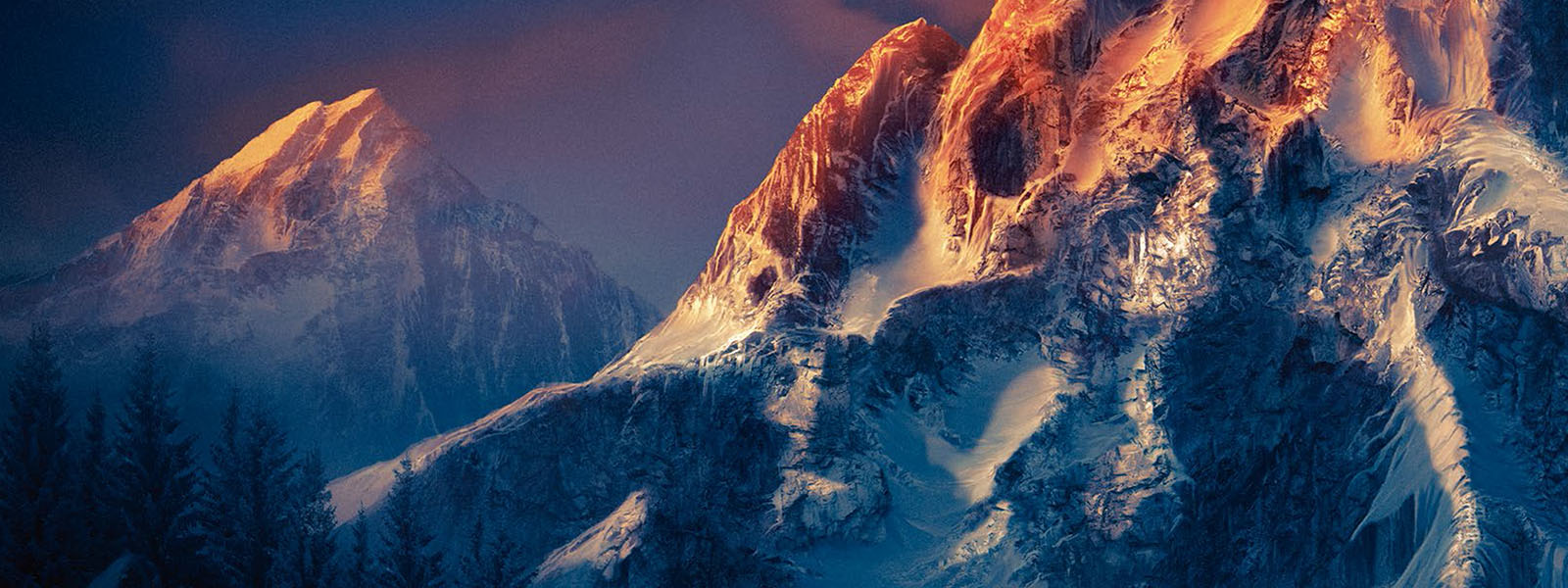
Credit: Nightwish / Nuclear Blast Records
The changes in tone in this track, from threatening and dramatic, to uplifting and reminiscent, seem to show a progression that's mirrored in the final track of the album, 'The Greatest Show On Earth.' So far, the album has been quite celebratory, recognising the remarkable fact of human existence and encouraging us to make the most of life. Now the focus seems to be shifting towards the future and the fact that human existence is fleeting and that evolution will eventually result in the end of humankind as a whole. The refrain 'We were here' returns in 'The Toolmaker' movement of 'The Greatest Show On Earth,' and appears to be a futile affirmation of humankind's achievements. It suggests that human activity is little more than graffitti in the face of the relentless and continuing course of Earth's history.
The Greatest Show On Earth
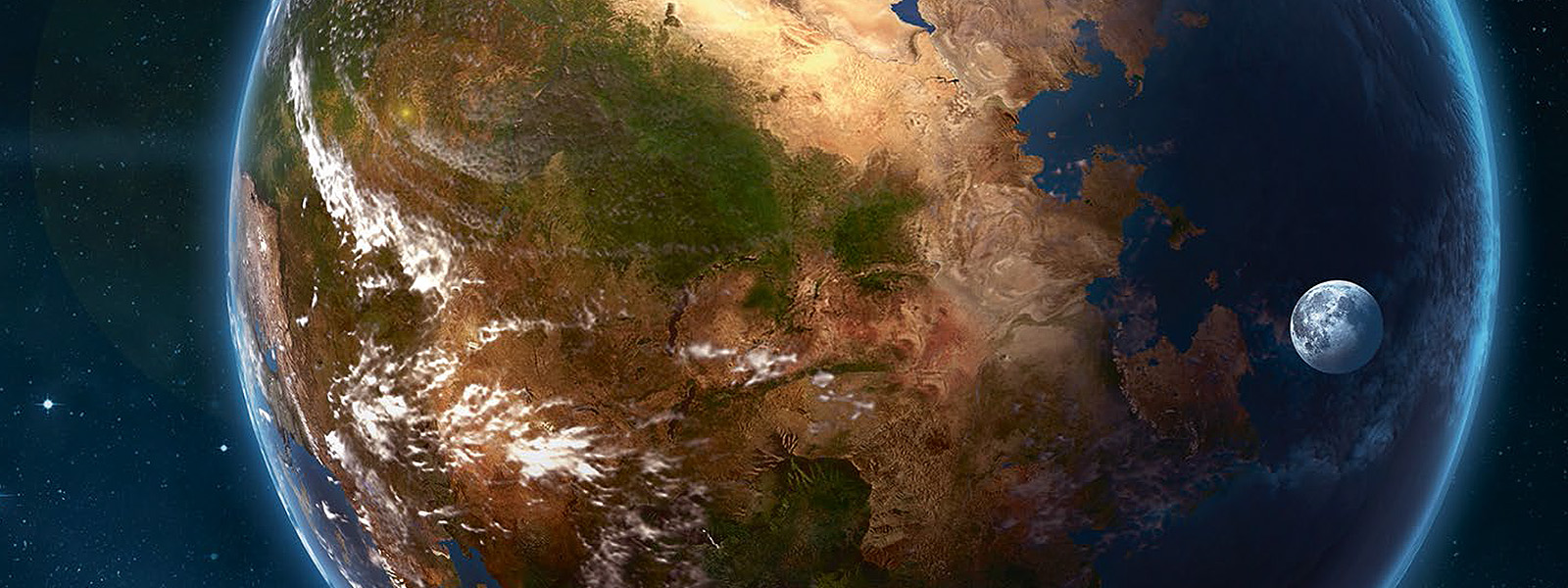
Credit: Nightwish / Nuclear Blast Records
In twenty four minutes, Nightwish take us from the formation of Earth around 4.54 billion years ago, through the evolution of life on Earth, the rise and fall of mankind, and beyond. With a combination of instrumental sections, Floor Jansen's vocals and Dawkins' spoken word parts, the human presence in the track waxes and wanes, representing the development of life and humankind on Earth.
'Four Point Six' deals with the formation of Earth before the beginnings of life. This period is commononly known as the 'Archaen' period, meaning 'ancient', though some count this as two separate eras, with 'Hadaen' coming just before 'Archaen'. The name 'Hadaen' is named after the Greek God of the Underworld, Hades, aptly named, as this period in Earth's history would have been quite hostile to life.
Evidence suggests that life on Earth started at least 3.5 billion years ago in the Archaen period. The second movement of this track, 'Life' derives beautiful metaphor from the processes that led to the formation of Earth and the environment in which life could develop. Earth was formed by accretion, which involves the growth of particles into a massive object, by attracting more matter with its gradually increasing gravitational pull.
The cosmic law of gravity
Pulled the newborns around a fire.
Such common scientific terms as 'stellar nursery' and 'The Goldilock's Zone' have a certain poetry in themselves, metaphors that can help understanding of astronomic concepts.
This celebratory track follows the development of chemistry on Earth until it's capable of hosting life, the preparation for 'the day to day new opening, for the greatest show on Earth.' As the Devonian period was that which saw the first instance of organisms diversifying rapidly to form a variety of new species, it is apt and concise to refer to humans as 'scions of the Devonian sea,' reminding us of our common origin shared with all life on Earth.
'The Toolmaker' marks the advent of mankind on Earth. Mankind's ambitions and curiousity are characterised as both something to admire and as something vain and destructive, driven by 'human lust to feel so exceptional.' Nightwish's dramatic symphonic rock style lends itself well to the tragic tone of the piece and later gives way to reminiscence. Carl Sagan's statement for humanity sounds rather pertinent in comparison with these lyrics.
Tracking the rise and fall of mankind, the latter part of this section reminds me strongly of H G Wells' The Time Machine, as Wells' protagonist travels far into the future to a point where mankind has evolved and diversified into two species: the gentle Eloi and the terrible Morlocks. Neither of these species have maintained the knowledge of their forebearers and civilisation has collapsed back into a new Dark Age. The Time Traveller inadvertently visits the abandoned British Museum thousands of years into the future. Nightwish seem to be referring to this very episode with the line:
Greet the last light of the library.
Throughout the album, references to man's 'time in the sun' describe the height of mankind's successes and endeavours. The sunset upon the library is representative of the inevitable end of humankind's search for knowledge. The refrain of 'We were here' returns in this track, a soulful and futile echo from the earlier 'Alpenglow'.
A hopeful monologue from Dawkins in 'The Understanding' reminds us of the remarkable chances of our existence, 'the lottery of birth,' reasserting our need to appreciate and make the most of our opportunity.
Appropriately the final section of this track, titled 'Sea-Worn Driftwood', includes no vocals, but some primal animals sounds and the wash of waves upon the shore. The Earth, and the evolution of life on Earth, will continue for long after humankind, and it appears Richard Dawkins will always be around to narrate the process.
Sagan (B side to Élan)
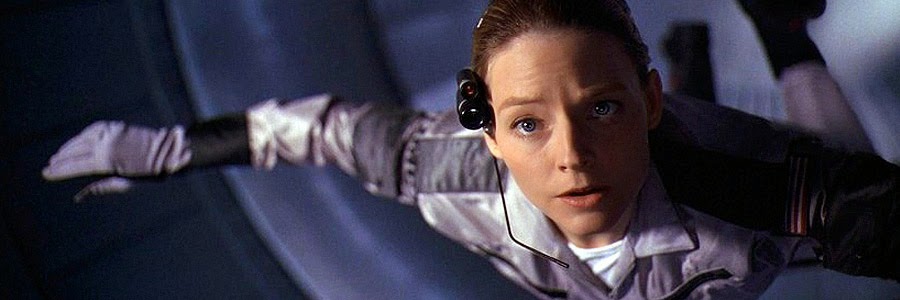
In a slight departure from the overall themes of Endless Forms Most Beautiful, this B-side is a tribute to American astronomer and author, Carl Sagan. There are repeated references to Carl Sagan's novel, Contact, in which a SETI scientist finds strong evidence of extraterrestrial life. The novel explores the relationship between science and religion, and as a clear agnostic, Sagan deals with the topic in an open-minded, enquiring manner. I hesitate to explain these references as I'd certainly include spoilers, so I encourage you to read Contact discover them for yourself. (For a diluted version of the story, I suggest watching the film adaptation, the script for which had much input from Sagan himself.)
Entering the unknown
Sending all the poets to the stars
The overwhelming theme of Endless Forms Most Beautiful suggests that we can gain a deeper appreciation of life, and gain artistic inspiration, from understanding science and our place in the natural world. With both astronomic and biological metaphors, the album aims to convey a sense of awe which is two-fold: first by witnessing the rare opportunity Earth has to host life in the vast emptiness of space, the 'pale blue dot', 'a pilgrim shining bright'; and also witnessing the insignificance of humankind in the vast scheme of evolution.
We are going to die, and that makes us the lucky ones. Most people are never going to die because they are never going to be born. The potential people who could have been here in my place, but who will in fact never see the light of day, outnumber the sand grains of Sahara. Certainly those unborn ghosts include greater poets than Keats, scientists greater than Newton. We know this because the set of possible people allowed by our DNA so massively exceeds the set of actual people.
In the teeth of these stupefying odds it is you and I, in our ordinariness, that are here. We privileged few, who won the lottery of birth against all odds, how dare we whine at our inevitable return to that prior state, from which the vast majority have never stirred?
Dawkins, Unweaving The Rainbow
Listing image: Nightwish / Nuclear Blast Records
References & Further Reading
- Nightwish, Endless Forms Most Beautiful (Nuclear Blast, 2015).
- Nightwish, Imaginaerum (Nuclear Blast, 2011).
- Nightwish, Oceanborn (Drakkar, 1998).
- Asimov, Extraterrestrial Civilizations (Crown, 1979).
- Darwin, On The Origin Of Species By Means Of Natural Selection (1859).
- Dawkins, The God Delusion (Bantam Books, 2006).
- Dawkins, The Greatest Show On Earth: The Evidence For Evolution (Transworld, 2009).
- Dawkins, Unweaving The Rainbow: Science, Delusion and the Appetite for Wonder (Boston : Houghton Mifflin, 1998).
- Rothfuss, The Kingkiller Chronicle (Penguin, 2007).
- Sagan, Broca's Brain: Reflections on the Romance of Science (Random House, 1979).
- Sagan, Cosmos (Random House, 2002).
- Sagan, Contact (Simon & Schuster, 1985).
- Sagan, Pale Blue Dot: A Vision of the Human Future in Space (Random House, 1994).
- Thoreau, Walden; or, Life in the Woods (Ticknor and Fields, 1854)
- Wells, The Time Machine (William Heinemann, 1895)
- The Carl Sagan Portal.
